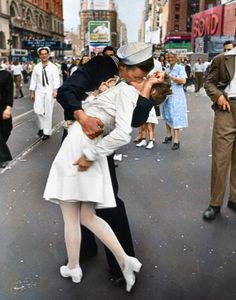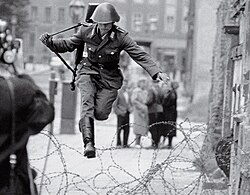Victory in Europe
Victory in Europe
May 8th, 1945
Victory in Europe (VE) Day: The End of War in Europe
Victory in Europe (VE) Day, celebrated on May 8, 1945, marked the official end of World War II in Europe. It was a momentous occasion that signified the surrender of Nazi Germany and brought an end to nearly six years of devastating conflict on the European continent. The day was met with massive celebrations across Allied nations, as people rejoiced in the hope of peace and freedom after years of hardship and suffering. This article explores the events leading up to VE Day, the surrender of Germany, the global reactions, and the long-term significance of this historic moment.
The Road to Victory
By early 1945, the Axis powers were on the brink of defeat. The Allied forces had made significant advances on both the Western and Eastern Fronts, pushing the German army into retreat. The tide of war had turned against Nazi Germany following key battles, such as the D-Day landings in June 1944 and the Battle of the Bulge in December 1944.
The Final Offensive In Europe
The Allies launched a final push into Nazi-occupied territories in early 1945. In the west, British, American, and French forces crossed the Rhine River and advanced deep into Germany. Meanwhile, the Soviet Red Army launched an aggressive offensive from the east, capturing key cities such as Warsaw and Budapest before reaching Berlin in April 1945.
The Fall of Berlin and Hitler’s Death
By late April 1945, Soviet forces had encircled Berlin, leading to fierce street battles and relentless bombing. Adolf Hitler, realizing that defeat was inevitable, retreated to his underground bunker in the capital. On April 30, 1945, he committed suicide along with his wife, Eva Braun. His death marked the collapse of Nazi leadership and left Germany without effective command.
Germany’s Surrender
With Hitler gone and Berlin in ruins, German forces quickly fell into disarray. The German High Command, under the leadership of Grand Admiral Karl Dönitz, attempted to negotiate a partial surrender to the Western Allies while continuing to resist the Soviet Union. However, the Allies demanded a complete and unconditional surrender.
On May 7, 1945, German General Alfred Jodl signed the unconditional surrender document in Reims, France, at the headquarters of Supreme Allied Commander General Dwight D. Eisenhower. The agreement stated that all German military operations would cease at 11:01 PM on May 8. Although the war in the Pacific continued, this marked the end of the war in Europe.
Celebrations Across the World
News of Germany’s surrender spread rapidly, sparking celebrations across Allied nations. In the United Kingdom, the United States, Canada, Australia, and many other countries, millions of people took to the streets to rejoice.
United Kingdom
In Britain, VE Day was met with an outpouring of joy. Crowds filled the streets of London, waving flags and cheering. Prime Minister Winston Churchill addressed the nation, declaring, “My dear friends, this is your hour.” The most iconic images of the day include King George VI and the Royal Family appearing on the balcony of Buckingham Palace, alongside Churchill, as thousands of people gathered below to celebrate.
United States
In the United States, President Harry S. Truman announced Germany’s surrender to the American public. The victory  was especially significant as it coincided with his birthday. Although celebrations erupted across the country, many Americans were also mindful that the war in the Pacific was still ongoing.
was especially significant as it coincided with his birthday. Although celebrations erupted across the country, many Americans were also mindful that the war in the Pacific was still ongoing.
Soviet Union and Eastern Europe
For the Soviet Union, VE Day had a different timeline. Due to the time difference, the formal surrender in Berlin was signed on May 8 but was announced in Moscow on May 9, which became the Soviet Union’s Victory Day. The Eastern Front had suffered immense losses, with over 26 million Soviet citizens killed during the war. The celebrations in Moscow were marked by grand military parades and fireworks.
The Aftermath of VE Day
While VE Day brought an end to the war in Europe, the world was still grappling with the destruction caused by the conflict. Entire cities lay in ruins, economies were devastated, and millions of people were displaced. The war had caused an unprecedented humanitarian crisis, leading to food shortages, homelessness, and political instability.
The Nuremberg Trials and Accountability
Following Germany’s defeat, the Allied powers sought to bring Nazi war criminals to justice. The Nuremberg Trials, held between 1945 and 1946, prosecuted key figures of the Nazi regime for crimes against humanity, war crimes, and genocide. These trials set a precedent for international law and human rights, shaping the future of war crimes tribunals.
The Division of Germany
VE Day also marked the beginning of a new geopolitical landscape. Germany was divided into four occupation zones 
![]() controlled by the United States, Britain, France, and the Soviet Union. This division later contributed to the onset of the Cold War, as tensions between the Western Allies and the Soviet Union escalated, eventually leading to the creation of West Germany and East Germany.
controlled by the United States, Britain, France, and the Soviet Union. This division later contributed to the onset of the Cold War, as tensions between the Western Allies and the Soviet Union escalated, eventually leading to the creation of West Germany and East Germany.
The Path to Peace and Reconstruction
In the years following VE Day, European nations worked to rebuild from the destruction of war. The United States launched the Marshall Plan, providing economic aid to help Western Europe recover. The formation of the United Nations in 1945 was another crucial step toward preventing future global conflicts.
Legacy of VE Day
Today, VE Day remains a symbol of victory, remembrance, and resilience. It is commemorated annually in many countries, with ceremonies, parades, and moments of silence to honor the sacrifices made during World War II.
Lessons from History
VE Day serves as a reminder of the horrors of war and the importance of unity in the face of tyranny. The sacrifices made by millions of soldiers and civilians played a vital role in preserving freedom and democracy. The lessons learned from World War II continue to shape global politics, diplomacy, and international relations.
VE Day In Modern Times
In recent years, VE Day celebrations have included veterans’ parades, memorial services, and educational programs to ensure that younger generations understand the significance of this historic day. Despite the passage of time, the spirit of VE Day remains strong, reminding the world of the courage and determination that led to the defeat of tyranny.
Conclusion
Victory in Europe Day was a defining moment in world history, marking the end of World War II in Europe and ushering in a new era of global politics. While it was a day of celebration, it also highlighted the immense cost of war and the need for lasting peace. As nations continue to commemorate VE Day, it stands as a testament to the bravery of those who fought and the enduring hope for a more peaceful world.
![]()
